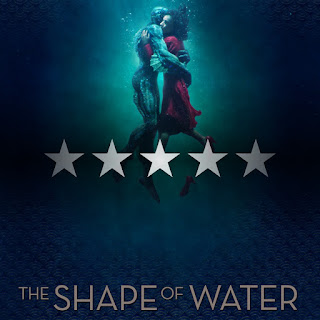If you take the titular characters from Amelie (2001) and Creature from the Black Lagoon (1954), set them against the art style from The City of Lost Children (1995), sprinkle on The Little Mermaid's story, and have it led by the director of Pan's Labyrinth (2006), and you get some idea of what The Shape of Water is all about.
When mute cleaner Elisa (Sally Hawkins) discovers a classified experiment in her work at a military research facility, she starts to form a bond with the strange amphibious humanoid. Elisa is horrified by the treatment of the creature and, undeterred by warnings from her colleague Zelda (Octavia Spencer) and neighbour Giles (Richard Jenkins), hatches a plan for its escape.
In describing The Shape of Water there are no words that can really do it a true justice, save for comparing it to those pieces of work that it so clearly takes influence from.
Taken on face value, the storyline itself makes little sense. In normal circumstances the idea that a cleaner could get solitary access to a highly valuable military asset is laughable, but to call The Shape of Water a Cold War drama is a complete misnomer. Indeed, it is a story that transcends its setting in time and needs to be viewed through the same lens as one would a fable or fairy tale.
But equally, its status as a fable-esque romance should not lull you into believing that it is just full of perfidious love. It has both a depth and a choreographed art to the intimacy and Hawkins' ability to convey the full range of Elisa's emotions without speaking is simply sublime.
There is an undertone in the whole film which hits on a moral level as well. While there is never really any fear because of the creature's actions, we are often reminded that the creature is neither - or both, depending on your point of view - a domesticated human nor a wild beast. Squeamish animal lovers be warned; this is not the film for you.
With all that said, it's easy to understand why The Shape of Water has its negative critics. Everything from the cinematography and music to the acting and direction is designed to be looked at as more of a piece of artwork than narrative fiction. But, as he did with Pan's Labyrinth, Guillermo del Toro shows that films open to critical interpretation don't have to be unwatchable to the masses.
5 stars

Comments
Post a Comment